
Recognizing Plant Direct authors: Will Hinckley
Plant Direct, Plant Direct: Author ProfilesWill Hinckley, first author of Gene Expression Changes Occurring at Bolting Time are Associated with Leaf Senescence in Arabidopsis
Current Position: 1st Year PhD Student
Education: BS Cellular/Molecular Biology from California State University, Long Beach
Non-scientific Interests: I have…
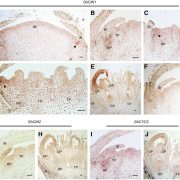
On the Inside: Molecular Regulation of Asteraceae Inflorescence Development
Plant Physiology, Plant Physiology: On The InsideThe reproductive structures of the Asteraceae (the sunflower family), the largest family of flowering plants, are among the most complex within the flowering plants. The species in this family develop head-like inflorescences that resemble flowers. In many Asteraceae flowers, the hermaphroditic disc…
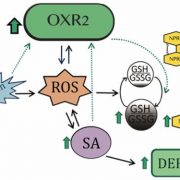
On how to build a larger and healthier Arabidopsis ROSette using a mitochondrial protein (spoiler: reactive oxygen species)
Blog, Plant Physiology, Plant Physiology: News and Views, ResearchJavier Edgardo Moreno
ORCID ID: 0000-0001-9763-5325
Twitter: @JaviMorenoOK
Instituto de Agrobiotecnología del Litoral (UNL-Conicet), Facultad de Bioquímica y Ciencias Biológicas, Universidad Nacional del Litoral
Santa Fe 3000, Argentina
Cellular respiration is at the core…
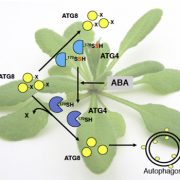
Persulfidation of ATG4 negatively regulates autophagy
Blog, Research, The Plant Cell, The Plant Cell: In a NutshellAna M. Laureano-Marín, Ángeles Aroca, et al. explore the role of persulfidation in the regulation of autophagy. Plant Cell https://doi.org/10.1105/tpc.20.00766
by Cecilia Gotor, Ana M. Laureano-Marín, Ángeles Aroca
Instituto de Bioquímica Vegetal y Fotosíntesis, Consejo Superior de Investigaciones…
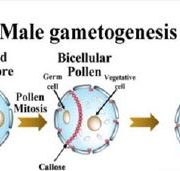
Callose deposition during pollen development
Blog, Plant Physiology, Plant Physiology: News and Views, ResearchMadeleine Seale
University of Oxford
[email protected]
Callose is a cell wall component that is dynamically deposited and degraded during pollen development. Thanks to a new paper investigating pollen formation in cotton (Gossypium hirsutum), we now know that a pollen-specific protein…
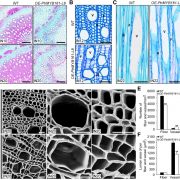
On the Inside: Feedback Regulation of Wood Formation in Poplar
Plant Physiology, Plant Physiology: On The InsideWood formation is controlled by a number of MYB family transcription factors, which may act as transcriptional activators or repressors. Secondary wall associated NAC domains (SNDs) and vascular-related NAC domains are master regulators controlling the expression of downstream transcription factors,…
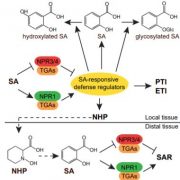
Zones of Defense? SA Receptors Have it Under Control
Blog, Research, The Plant Cell, The Plant Cell: In BriefThe constant evolutionary arms race with pathogens has equipped plants with a layered immune system. As the first line of defense, membrane-localized pattern recognition receptors perceive microbe-associated molecular patterns and activate pattern-triggered immunity (PTI). In parallel, R proteins –…
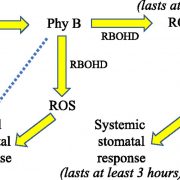
On the Inside: Phytochrome B and Systemic Reactive Oxygen Species Waves
Plant Physiology, Plant Physiology: On The Inside
Several recent studies have revealed that reactive oxygen species (ROS)waves propagate through plants, originating at the treated, stimulated, or stressed local tissue and spreading within minutes to the entire plant. ROS waves regulate and coordinate systemic metabolic, molecular, and physiological…

Plant Physiology welcomes 16 new Assistant Features Editors
Blog, Plant Physiology: Editorials, Pubs PagesAt the beginning of 2018, Plant Physiology initiated a program to introduce several promising early-career scientists to the editorial board and engage their expertise in assessing and writing about research published in the journal. Over the past three years, these scientists brought their passion for…

